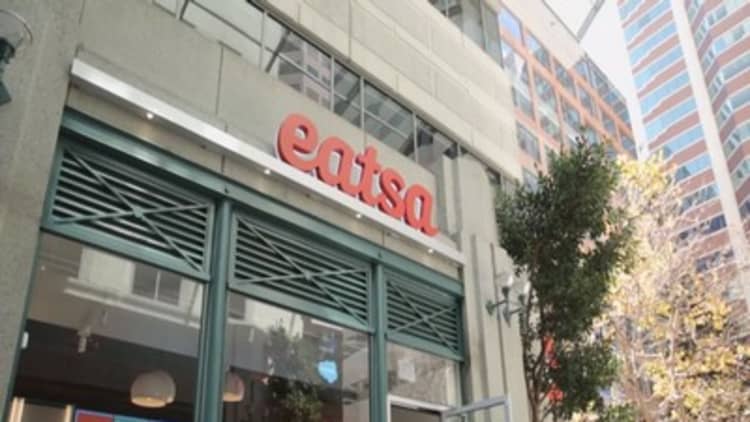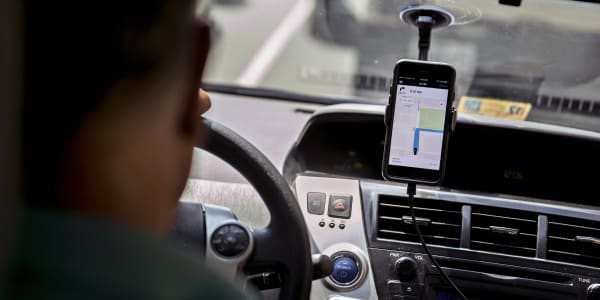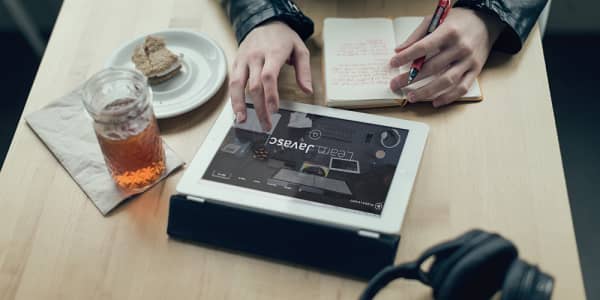
Gears are turning at the heart of one San Francisco lunch spot that's cranking out quinoa bowls for hungry tech professionals.
Staffed with iPads instead of waiters and using cubbies todeliver food from the kitchen to the customer, high-tech restaurantEatsa is so efficient that it serves twice as many people as itscompetitors in the neighborhood might, according to the company'sco-founder Tim Young, in an interview with CNBC.
Eatsa is attempting to achieve a lunchtime trifecta of healthy, cheap and fast, and some would say they're succeeding.
A bowl of quinoa, the trendy fiber- and protein-rich grain, served with an assortment of toppings, costs $6.95.
"For folks who are constrained by price point and really can't necessarily afford to pay $14 for a salad on a daily basis, there aren't a lot of great options, and quite frankly probably no options for them," said Young, who started up Eatsa with co-founder Scott Drummond with funding from David Friedberg, CEO of the Climate Corp., a farming technology company.
Bigger-name fast food and quick service restaurants, with menu items cheaper than $6.95, have incorporated kiosks into their workforces as well.
McDonald's, which serves salads, is now using kiosks in some of its restaurants, letting customers order and pay without human interaction, and Panera Bread customers can use kiosks and an app to order and pay as well.
But those who are looking for an arguably healthier meal, ordered in a room with a simpler aesthetic and served up in a touch-screen operated cubby may have the money, but not much time.
"...You've got the busy folks who can't afford to wait in line 30 minutes for their food. And a lot of those healthier places are operationally a little slower, and you find often that you're waiting 30 minutes to get that salad that you're then going to pay $14 for," Young said.
While technology makes humans' work easier, boosts efficiency and cuts costs, Eatsa may not operate human-free anytime soon.
"Fundamentally, we believe strongly in combining advancements in technology with the viability of human employees," Young assured CNBC.
Young said an Eatsa in Los Angeles is on the way.
Watch The Pulse on CNBC's Squawk Alley, today at 11am ET/8am PT.







